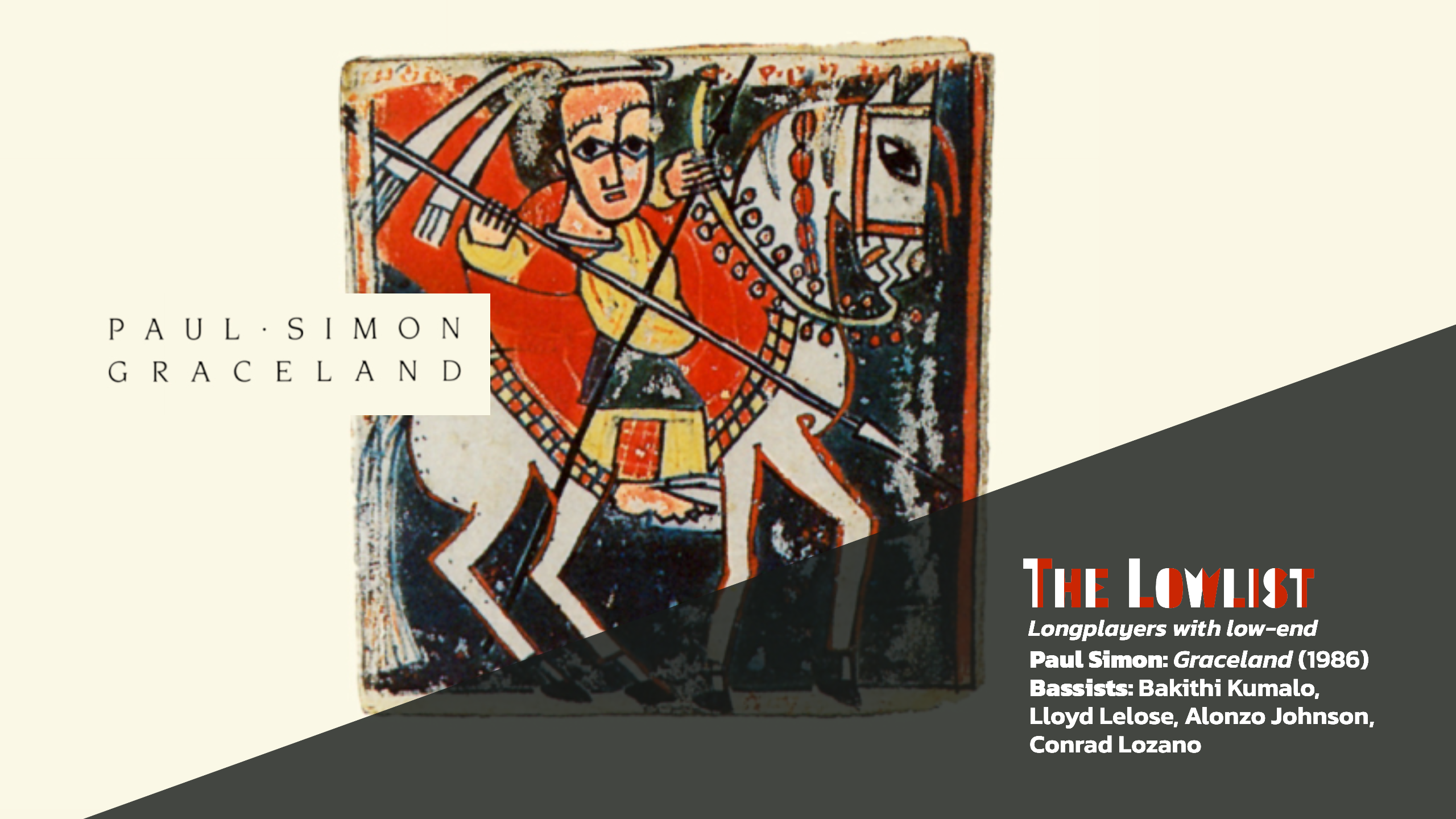
It was Talking Heads man David Byrne who said what bass players all over the world were thinking: “The [Paul Simon] albums before Graceland had great songs, but this one had a little bit more low end going on.”
When this 1986 smash album first hit the radio, there probably wasn't a bassist on the planet whose head wasn't turned by the incredibly interesting, free-flowing fretless lines of Bakithi Kumalo. The virtually unknown South African lit up such hit tracks as You Can Call Me Al and The Boy in the Bubble, making a positively great album out of what would have been simply an excellent one.
Of special interest is Diamonds on the Soles of Her Shoes – its sublime bass fills managed to be busily syncopated and understated at the same time – and made even non-musicians look at the radio and say, "What an amazing bass player!"
Kumalo had been working, helping out a local mechanic in South Africa, when he was invited to the studio. “I showed up at the studio, and it looked like a daycare,” Kumalo told us. “There were a lot of musicians, and some of them had brought their kids. Paul was sitting on the floor playing with kids, and then he introduced himself. He said, ‘Hey, my name is Paul Simon, and I love your work.’ I’m thinking, ‘You love my work?’
"Then he plays Hapete by Tau Ea Matsekha, and he asked, ‘Are you the bass player on this track?’ I said yes. He’s like, ‘Man, I love this. We’re going to work with this groove.” So we started to jam and change things around on [what later became] The Boy in The Bubble.”
Kumalo was still in his work clothes. “I came in with my greasy hands and ripped pants, and my toes were sticking out of my shoes. Paul asked me if I wanted a bass case, and then he was like, ‘Do you need another bass?’ I said, ‘Sure!’ So he sent somebody to the music store and got me a Fender. I played that bass on the Graceland shows we did in Zimbabwe, and it sounded unbelievable. But it got stolen in South Africa.
“Paul loved everything I played. His engineer, Roy Halee, deserves credit for recognizing my sound, putting reverb on my bass, and letting the world hear it. He’s responsible for my fretless sound.
“Paul is not really a bass person,” he said. “He likes the feel of it, but he’s not a really big bass fan. He likes guitars and horns; keyboard, not very much. He’s always directing the bass, and I have to give him what he wants. He doesn’t want too much bass in his ear when he’s singing because he’s telling a story, and he wants people to hear every word he’s saying.”
It never got in the way on Graceland. Underneath brilliant pop tunes like Diamonds…, I Know What I Know, The Boy in the Bubble and You Can Call Me Al flowed joyfully vocal bass lines that were singular works of art. The swooping, muscular parts, models of nimble technique and impressive intonation, were uniquely South African, immediately intoxicating, and buoyantly delivered.
Fretless bass would never be the same.
Graceland by Paul Simon is available to buy or stream







